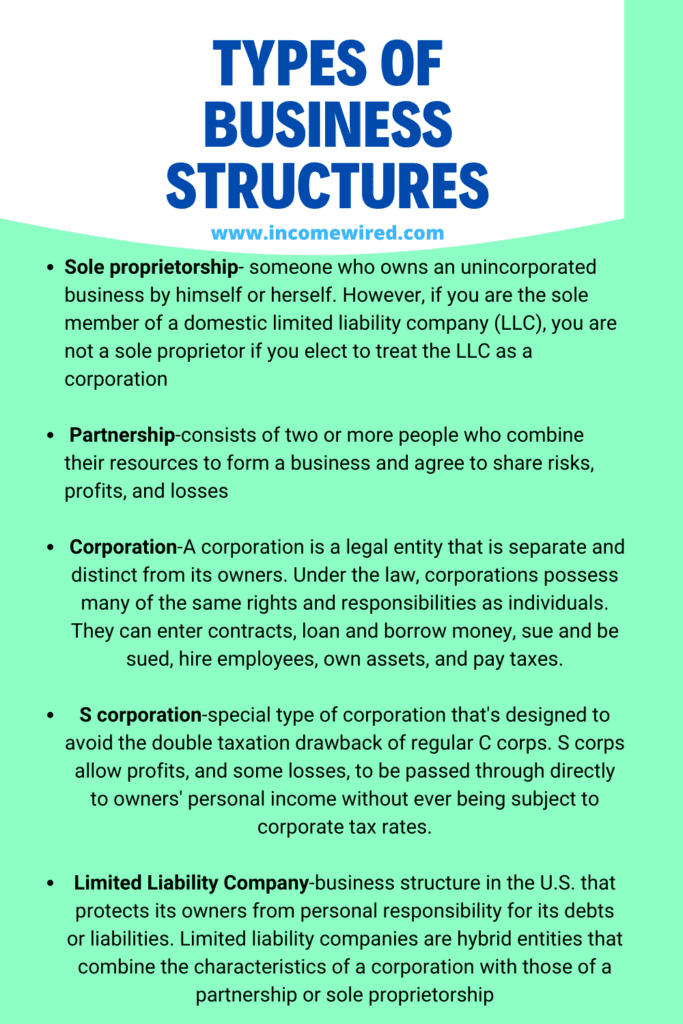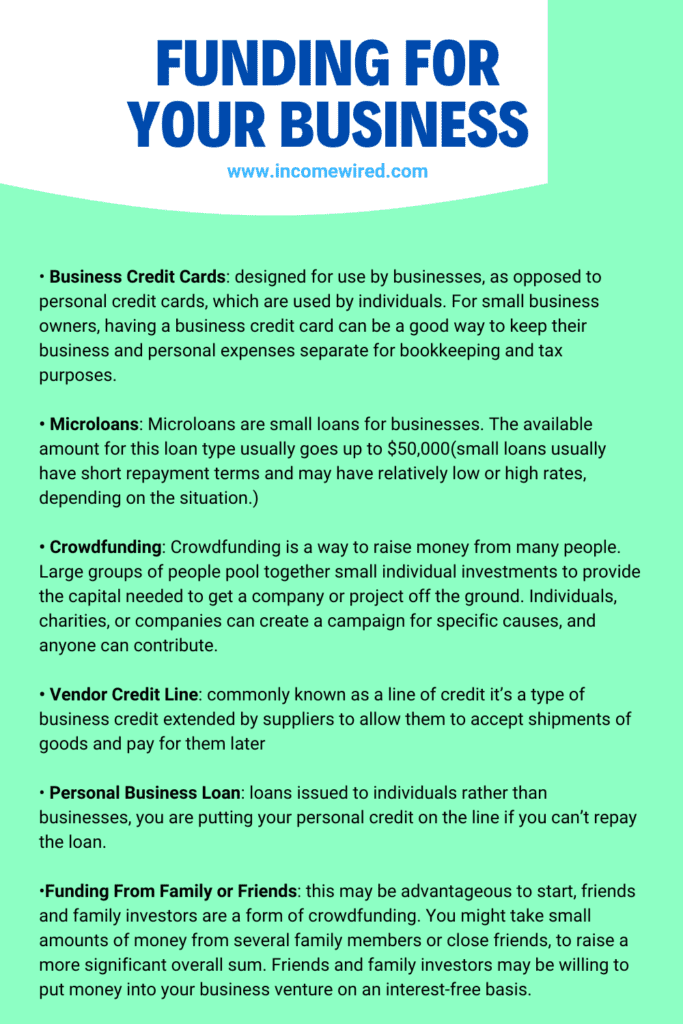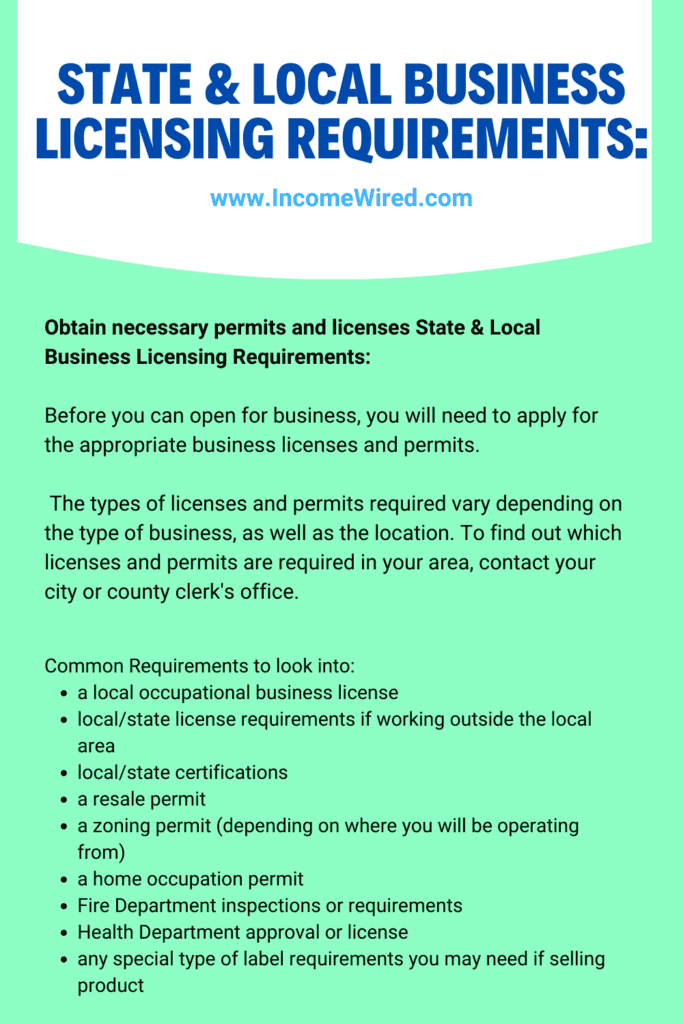we help service-based business owners, freelancers, and aspiring businesses with our content & services & When readers purchase services discussed on our site, we often earn affiliate commissions that support our work. Find out more about Income Wired
What is a Gym Business?
Starting a gym business is a terrific option if you are a fitness enthusiast/interested in health and fitness. You can give your clients monthly gym memberships or make arrangements with nutritionists and fitness coaches so that your gym members meet all their needs in one location.
Why Start a Gym Business?
A gym business offers room for expansion and could be financially rewarding. Starting a gym business will give you a sense of personal satisfaction after helping and guiding people toward their fitness goals and a healthier lifestyle. You could begin your gym business on a smaller scale, buy the basic gym equipment, and either start your gym business from the basement of your house or garage or rent a small space and gradually expand your business over time.
A Gym Business: Market Analysis
- The market size: The market size of the fitness industry was USD 32.0bn in 2022.
- Projected Annual Growth Rate: The annual growth rate of the fitness industry in 2022 was 4.2%.
- Key players in the market: Planet Fitness, Gold’s Gym, Equinox, LA Fitness, Crunch Fitness
Sources: https://www.ibisworld.com/industry-statistics/market-size/gym-health-fitness-clubs-united-states/
https://www.exercise.com/learn/most-successful-gyms-in-us/
A Gym Business: Startup Analysis
| Startup Costs | The initial costs for a gym business could range between $10,000 to $50,000 and above. It will entirely depend on the size and scale of your business |
| Supplies | These will include gym equipment costs such as cardio machines, kettlebells, weights, yoga mats, ropes, tires, benches, etc. |
| Insurance costs | The average flower shop in America spends between $400–$1,500 per year for $1 million in general liability coverage. However, as a home-based business as convenient as it sounds, homeowners’ insurance might not cover various business-related accidents or inventory damage. Therefore, you should get Home-based business insurance. |
| Permits, licenses, and legal fees for the business | General liability insurance could range between $500 to $1,700 a year. |
| Business Software | A business must have a professional and robust web presence. The initial costs of building a business website could be between $500 to $700 |
| Disclaimer:
These costs may vary, depending on location, competition, supplies, sources, market share & your personal decisions, but they offer a good idea of what you will spend to start. Our Data are purely informational and should not be taken as legal or financial advice. |
Start a Gym Business in these 11 Steps:
- Create a business plan for your gym business
- Legalize your gym business
- Set up your gym business for taxes
- Set up your gym business bank account and explore funding for your business
- Set up an Accounting and Invoicing setup for your gym business
- Acquire the necessary permits and licenses for your gym business
- Get the required business insurance
- Grow your gym business by creating a website and promoting it on social media
- Create an online business presence for your gym business
- Get leads and call for your gym business
- Get to know your gym business and research the local competitors
Step 1: Creating a Business Plan for a Gym Business
The first step toward starting your gym business is to create a business plan and set short-term and long-term goals and targets. This way, you would be able to manage and evaluate your business objectives and track your business’s progress in the future. A strong business plan will also help you find investors for your gym business if you plan to expand your business.
Essentials of What a Gym Business Plan Contains are:
- An executive summary of your business’s operations;
- A general description of the company
- An introduction to your business
- The business’s organizational structure
- Competitive research and market analysis
- An explanation of your goods or services
- A marketing and sales strategy for your products and services
- Plans for sales and marketing
- A business road map
- The projected growth as per your business plan
What are the Costs Involved in Opening a Gym Business?
Starting a gym business would include the costs of gym equipment, insurance, rent, licenses, salaries (if you are hiring fitness trainers and other staff), advertising costs, etc. Depending on the size of the business, the startup costs could range from $10,000 to $50,000 and above. Startup costs must include the following:
- Free weights
- Cardio machines (rowing machines and treadmills)
- Mats
- Power racks
- Kettlebells
- Resistance bands
- Ropes and tires
- Benches
- Isolation machines
Other required costs:
- Website
- Insurance
- Permits/licenses/Legal fees
What are the Ongoing Expenses for a Gym Business?
The ongoing expenses or operating costs of a gym business are the expenses that your business will pay whether or not it is making a profit. These expenses would vary depending upon the size of your gym business and could include the following costs:
- Equipment, rent, and supplies: If you are purchasing, leasing, or renting space for your gym location, you will have to pay for rent and facilities. You will also have to have the required gym equipment and supplies.
- Labor costs: Include salaries you will have to pay if you are hiring fitness trainers or other staff members for your gym.
- Utilities: These would include the costs of electricity, water, and heat
- Leasehold Improvements: These would consist of the expenses that cover anything you might add to your gym, such as carpets, lighting, security systems, etc.
- Insurance: As a gym owner, you should expect some physical injury can happen to your members while exercising. Therefore, you must get general liability insurance for your business.
- Gym maintenance: It’s crucial to have your gym clean and well-kept to satisfy your clients. You can hire a devoted janitor or maintenance worker to help maintain the sanitation of your gym.
- Legal Compliance: These would include the costs of legalizing your gym business and creating it as a legal entity
- Advertising costs: You must keep investing regularly in the marketing and advertising of your gym business.
Who is the Target Market?
A varied range of people who want to stay or become in shape and feel their best make up the target market for gyms. There is a fitness facility, gym, or health club for everyone, whether they are bodybuilders, parents with hectic schedules, executives with busy schedules, or athletes.
As you can expect, not everyone is seeking the same thing. Some people might be interested in yoga or Pilates depending on their age, level of fitness, and health goals, while others might choose more intense workouts.
You can divide the target market for gyms or fitness centers into the following key groups: People desiring to increase their level of fitness, individuals wishing to reduce their weight, add muscle mass or tone their bodies, athletes getting ready for a competition, individuals recovering from an injury or surgery, older people seeking a low-impact workout or individuals with disabilities, etc.
How Does a Gym Business Make Money?
How your gym business makes money will vary according to the business model you decide for your business. Starting with offering monthly memberships to gym members, you can also add in and charge for extra special classes such as yoga, Pilates, kickboxing, spin classes, dance and aerobics lessons, etc.
Apart from offering workout lessons, you can add other services to your gym to generate extra revenue, such as personal training or healthy food service. You can also hire nutritionists to offer your gym members specialized and healthy diet plans, which would help them reach their fitness goals.
How Much Can You Charge Customers?
Most gyms often charge $20 to $50 for monthly memberships. For instance, a gym can give a client a discounted rate when a client pays a year in advance. There is a sign-on fee a gym would charge that could be in the range of $100 to $300.
Before setting the right price, you must remember where your gym is based, what your local competitors are charging, and your target market. The extra you make will depend on the local demand and the kind of gym you wish to operate. You can charge more for the other services that you may provide.
How Much Profit Can a Gym Business Make?
The amount of profit your gym business will make will depend on the size of your gym and the number of extra services provided. The income in the first couple of years of starting your gym business could be highly unexpected. Therefore, you should not set a number that you must make at this point when you are just starting your business. However, we can get an average idea from online sources to find how much profit can a gym business make.
According to ZipRecruiter, an American employment marketplace, the average annual salary for a gym owner in the United States as of June 2022 is $69,472, and according to Salary.com, the average pay for a gym owner as of July 26, 2022, is $52,263.
How Can You Make Your Gym Business More Profitable?
You have various options to increase the profitability of your gym business, like raising membership fees, adding new services, or opening a retail store to sell items like protein bars, snacks, and athletic gear. If you intend to increase your pricing, you must be sure that the services offered are of the highest caliber to justify those increases. You can host workshops and camps to inspire your members to exercise and maintain a healthy lifestyle. You can set up a bar at your gym where you sell nutritious snacks, protein shakes, and fresh juices.
What Will You Name Your Gym Business?
Your gym business needs a compelling brand identity to be famous in the market and your community. A catchy company name will aid in luring prospective and devoted gym members. You must provide the name of your business when creating a business bank account, applying for permits and licenses, and registering your company as a legal entity. In a sense, choosing a business name is a creative method to represent the values of your business and increase its legitimacy.
Step 2: Legalize Your Gym Business
After deciding on your business name, you must take the next step and legalize your business as a legal entity. Legalizing your gym business would reduce liability risks in case of a lawsuit. Regardless, if you plan to operate as a sole proprietorship or an LLC, both should be set up as legal entities to run legally. When you hire employees, you must obtain an Employee Identification Number (EIN). You can file taxes and give tax information to any staff members of your gym with your EIN, including any directly employed personal trainers, receptionists and managers, and others. At the end of the year, your EIN distinguishes your personal tax information from your gym, making it simple to keep track of all critical data. Lastly, you get your business license and the required business insurance.


Step 3: Setup Your Gym Business for Taxes
Another crucial step in starting your gym business is registering with the IRS, especially if your company is in the US or one of its territories. If you undergo auditing during tax season, you will be prepared with all the required paperwork, preventing penalties and legal implications.
The first step is to submit an online application for an Employer Identification Number, which requires your social security number and other pertinent data. For more details, you must read the helpful directions on IRS.gov.
Step 4: Setting Up Your Gym Business Bank Account & Exploring Funding for Your Business
Your personal and business transactions are kept separate by having a business bank account and credit card, which also offers some legal safeguards. Maintaining a business bank account, for instance, can assist you in liability protection and the security of your assets if your firm is sued or found liable. It is valuable if you run an LLC or corporation.
Additionally, having a bank account and a credit card helps you establish company credit, which suppliers and vendors will check before doing business with you. Consider creating your company accounts as soon as you begin incurring or receiving payments.
You may need to look into local banks that might be better for your business. Make sure to look at their interest rates, any loans, and any additional services they might provide to companies.
Most Common Types of Funding for Your Gym Business:


Step 5: Gym Business Accounting & Invoicing Setup
If you want to manage your gym business expenses and keep an eye on the progress of your company’s finances, you must keep account of all your expenditures. Be honest with yourself. Keep meticulous records of every dollar you spend. Use a business debit or credit card whenever you can, and scan and digitally store all of your receipts.
The spending for your business can be managed and tracked with QuickBooks. Billing, paying suppliers and contractors, meeting tax and other requirements, and other uses are all possible. The software allows you to automatically manage your company’s spending and produce reports on financial data. Additionally, the QuickBooks program records every transaction you make, making it a quick and easy way to measure how well your business is doing.
Markate– a software that helps you manage everyday business activities, e.g., estimates, work orders, invoices & even scheduling
Step 6: Acquire the Necessary Permits & Licenses for Your Gym Business
State & Local Business Licensing Requirements:


Step 7: Get the Required Insurance for Your Gym Business
Because injuries and accidents frequently occur in gym settings, you must shield your company from responsibility if something goes wrong.
There are many types of business insurance policies available, so it is important to speak with an insurance agent to determine which type of coverage is right for your business.
some common types of business insurance include:
- general liability insurance
- product liability insurance
- property damage insurance
- business interruption insurance
- worker’s compensation insurance
Get a Free Quote Here
Step 8: Grow Your Gym Business Brand
Your ability to create a brand that will stand out in the utterly competitive fitness sector depends on a robust brand-building process. To stand out from the competition, you must find a way to be distinguished. You must constantly invest your time and money to advertise your gym business to grow.
How to Promote Your Gym Business?
There are several strategies that you can use to promote your gym business. Having a high social media presence is one of the first steps you need to take to become part of the online fitness community. You can advertise your gym brand on your personalized gym products, distribute business cards around the block, offer new gym members free gym passes for a week, or you can offer free personal training for your gym members, etc. You may need to target the right audience to promote your gym business so that your marketing strategy attracts potential clients and helps grow your business brand.
How to Retain Your Gym Business Clients?
To retain your gym clients, you must keep various factors in check, such as your gym member’s and staff’s health and cleanliness, especially after the pandemic. You could go digital and minimize physical contact by accepting credit cards or electronic payments instead of cash, installing self-check-in devices, and holding online classes linked to the membership plan.
Most people feel motivated when they train as part of a group. Therefore to retain your gym members, you could hold group challenges and lessons or provide group training.
Start showing your gym members their progress to keep them motivated. Try new techniques for your members to track their weight and measurements to see how far they have come in their journey.
People may be motivated to visit your gym if you consistently upload stories, videos, captions, and other fitness content on social media. You can ask your clients to leave their feedback and reviews so that it encourages more people to join and retain your existing clients and also so that you can improve your services where it lacks.
Step 9: Create an Online Presence for Your Gym Business
You must create a website for your gym business. Your facility’s equipment, classes, and programs, as well as any additional aspects of interest like on-site daycare or cutting-edge technology that customers may not have seen before, should all be described on your website. You will select Webhosting when building the website for your business to house all of your data (profiles, images, files, etc.). Many online service providers, including https://www.bluehost.com, can assist you in creating your company website.
You may need to create a strong presence on social media networks such as Facebook, Instagram, TikTok, Twitter, and LinkedIn, upload transformation videos of your clients, workout and motivational videos, and other content related to health and fitness. You must interact with your followers and create an online community to stay relevant in the competitive fitness market. Connect your social media accounts to your company website so clients can access your business and learn more about your business. Additionally, you can add client reviews on your website, Google, Yelp, etc.
Step 10: Getting Leads & Calls for Your Gym Business
Your business contact details, email address, and physical location should be on your business website and social media accounts. Invest in advertising your business brand and create flyers and business cards with the above contact information. You could ask your family, friends, and previous clients to help you spread the word around. You could also network with other fitness influencers and collaborate with other businesses in the industry, which could help increase your business visibility.
Separate Your Business Phone from Your Phone
Through a virtual phone system, users will have more freedom to call and receive from a single business phone number using a desktop program, a mobile device, or a desk phone. It will assist you in automating your business and provide a far more professional experience for you and your clients.
Separating your personal and business phone is very beneficial and essential. It will improve your focus as you distinguish between personal and professional calls. It enhances the company’s legitimacy and results in effective communication, fostering confidence and trust on both sides.
Step 11: Get to Know Your Gym Business and Research Your Local Competitors
Lastly, you may need to research more about the industry and your local competitors before starting your own gym business.
Educate Yourself on the Gym Business Industry and Learn About the Market Trends
Do your research and learn the new markets and trends. Find what is in demand and trending so you can upgrade your services accordingly.
Getting to Know Your Local Area and Competitors
It is always better to be aware of with whom you are competing. You must research and look at your competitors in the local market, find their monthly membership charges, what type of lessons and training they provide, the quality of their services, etc.
Network with Other Businesses
Learn from the other businesses in the same industry you can find on the internet and start networking and collaborating with others and professionals in the industry.
Seasonal vs. Year-Long Business: What is Right for Your Gym Business?
The decision to operate your gym business seasonally or year-round depends on your priorities. A gym business would require your full attention and commitment. If you are a student or an employee who plans to run a gym business on a part-time seasonal basis, the success rate of your gym business might not be very high. However, you could always start small with minimum equipment from your home basement or an extra room and slowly build your gym. On the other hand, if you wish to launch a full-time gym business, your company’s expected profitability will be very high.
Is Starting a Gym Business Right for You?
People who are passionate about health and fitness and have sound business judgment are typically the ones that open a gym. Ownership of a gym necessitates a significant time commitment, making it unsuitable for those who prefer a flexible work schedule.
Tips for Your Gym Business Success
- Remain focused on your business goals and objectives
- Make sure that your clients are satisfied and given the best services.
- You must research and find out what kind of training methods and workouts are trending.
- Try and offer services that make you stand out in the industry.
- Task delegation is necessary to increase productivity and foster internal trust.
- Remain patient to observe the success of your gym business, as it takes time and a lot of hard work to see the results.
Frequently Asked Questions for a Gym Business:
1. Do you need a degree qualification to start a gym business?
You are not required to have a degree to open a gym. The opportunity for your new gym to flourish will come from having experience in business, accounting, marketing, management, and health and fitness.
2. How can a gym turn a profit?
The three sources of revenue for gyms are membership fees, sales of classes, personal training packages, and add-on products and services.
3. What makes a gym stand out?
Building a successful gym requires developing an attitude that values each person who enters, enabling them to progress and feel significant.
4. Is the gym business likely to succeed?
According to market research, a medium-sized gym owner could make about $150,000 a year. A medium-sized gym typically requires an initial investment of $100,000. However, your first financial year’s profits could be as little as $50,000.
5. What are the challenges you can face as a gym owner?
No matter what type of business you start, there will always be hurdles. Keeping everyone satisfied and dealing with your staff and clients could be challenging. There could be financial or management issues, a lack of client base, etc.
6. What business structure is best for a gym?
As the most common type of business entity, an LLC is fast, simple, and inexpensive to set up and maintain. It protects your finances and assets and is a great way to start your training or gym business.
7. What tasks does a gym owner perform?
Gym owners are responsible for a wide range of tasks. They must oversee and inspire their team, ensure that the bills and staff salaries are up to date, ensure that the business is running smoothly, and put measures in place to ensure that the gym attracts and keeps current members.



